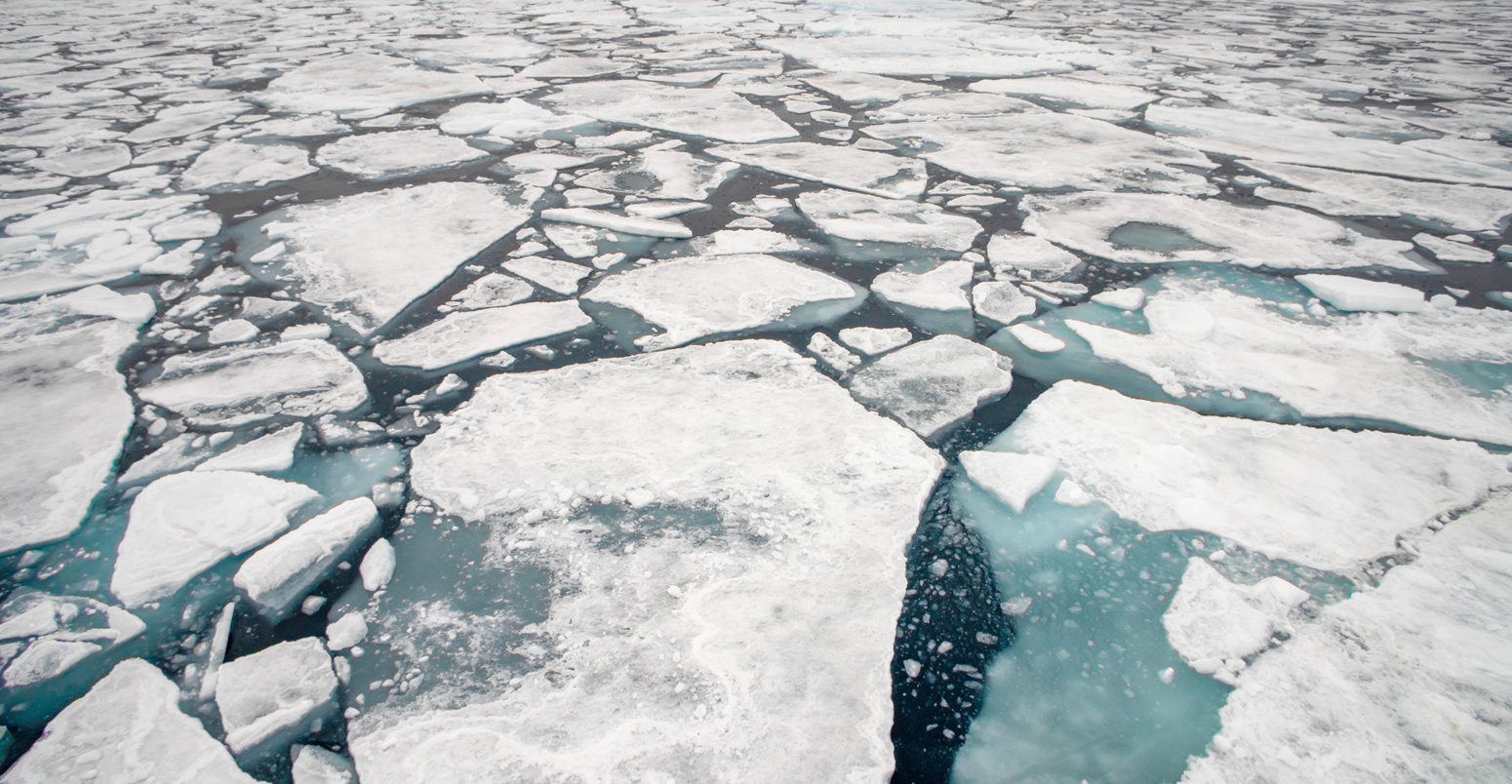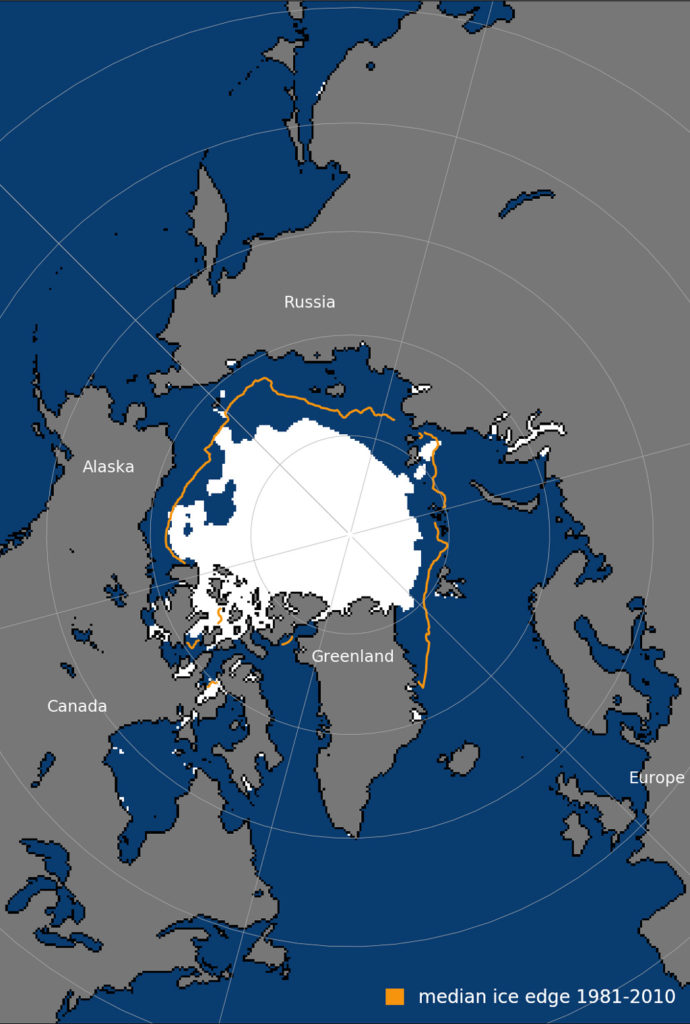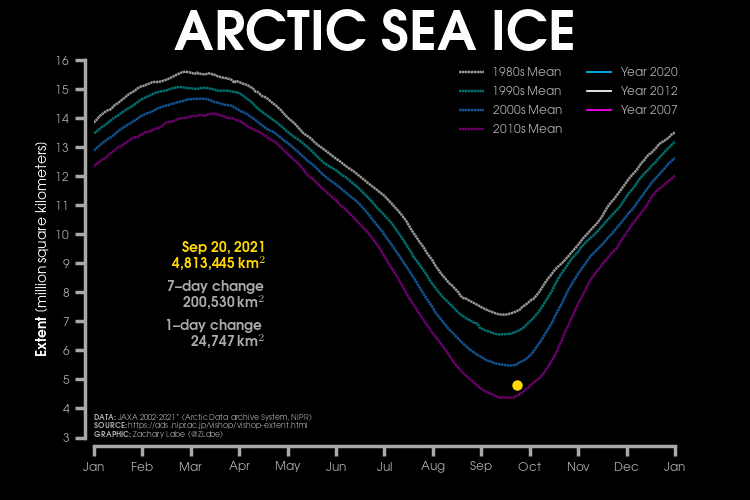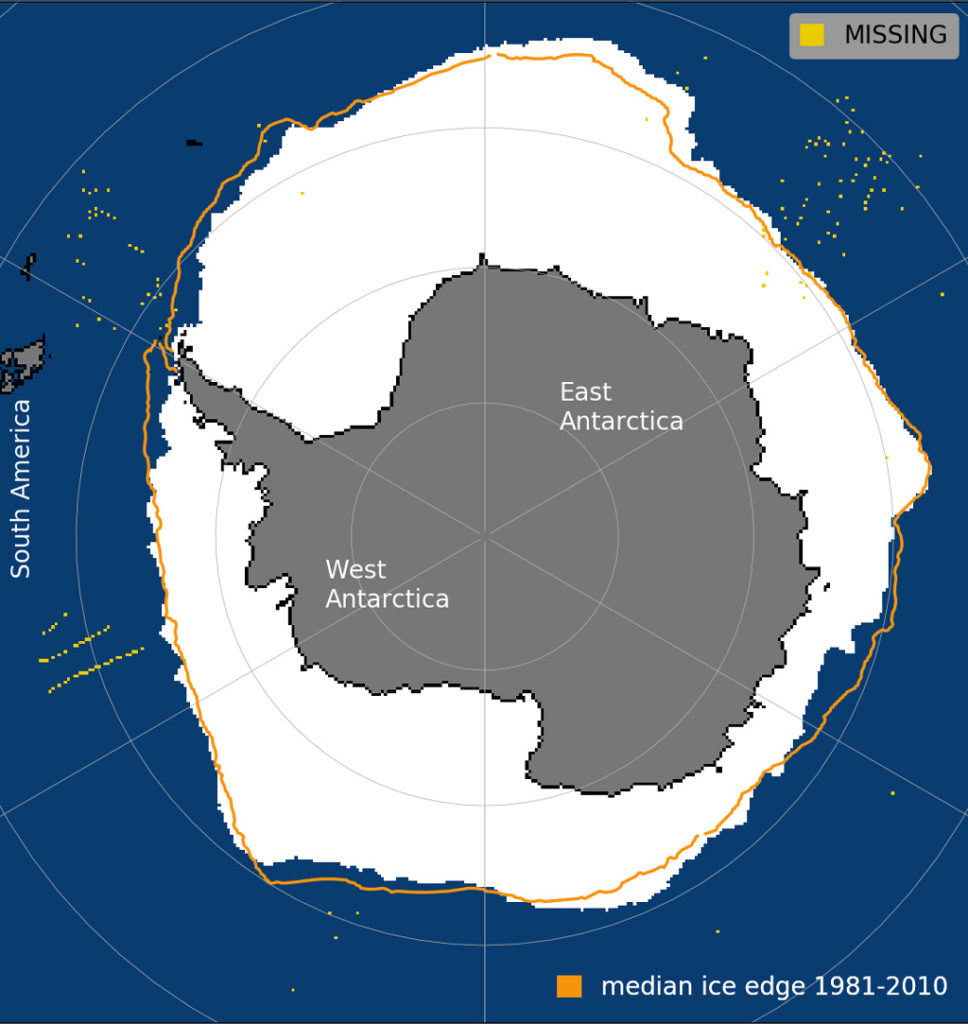
Arctic sea ice summer minimum in 2021 is ‘12th lowest’ on record
Ayesha Tandon
09.22.21Ayesha Tandon
22.09.2021 | 5:45pmArctic sea ice has reached its annual minimum for 2021, clocking in at the 12th lowest on record, according to provisional data from the US National Snow and Ice Data Centre (NSIDC).
While this is the largest summer minimum since 2014, the NSIDC notes that the amount of multi-year sea ice this year is “one of the lowest levels in the ice age record”.
Sea ice in both the Arctic and Antarctic undergoes an annual cycle, growing in thickness and coverage over the colder months, and thinning and receding when the temperature rises. Arctic sea ice typically reaches its “summer minimum” in September – marking the point when it covers the smallest area.
Last year, the Arctic sea ice minimum clocked in at the second lowest on record – in part due to an intense heatwave over Siberia. In contrast, this year has been defined by storms and low pressure systems, which have kept temperatures low and kept older, multi-year ice moving to fill in gaps in sea ice, limiting the reduction in the extent.
Meanwhile, at the south pole, Antarctic sea ice extent is tracking “well-above the long-term average”, says the NSIDC, as it grows to its annual maximum, which can be expected in the coming weeks.
‘Unremarkable’ minimum
Arctic sea ice extent reached its minimum for the year at 4.72m square kilometers (km2), on 16 September, according to the NSIDC. This is the 12th lowest in a satellite record stretching back 43 years, the NSIDC says, with the past 15 years seeing the 15 smallest sea ice minima.
It is also 1.50m km2 smaller than the 1981-2010 average minimum extent, the NSIDC notes – equivalent to twice the size of Texas.
It’s official —> “The 2021 minimum is the twelfth lowest in the nearly 43-year satellite record. The last 15 years are the lowest 15 sea ice extents in the satellite record.”
— Zack Labe (@ZLabe) September 22, 2021
See @NSIDC release: https://t.co/tdIyzDH1i1 pic.twitter.com/aWuhlxcFER
Although the minimum extent is not record-breaking, NSIDC director Dr Mark Serrezze notes that “the amount of old, thick sea ice is as low as it has ever been in our satellite record”. This means that the increase in total sea ice extent from last year’s minimum to this year’s “is hence comprised of first-year ice”, the NSIDC notes.

Dr Zack Labe, a postdoctoral researcher at Colorado State University, tells Carbon Brief that the unexceptional minimum does not mark a long-term recovery of Arctic sea ice.
“Arctic sea ice extent observes significant year-to-year variability, despite a long-term trend of decreasing ice cover. This is due to changes in weather patterns and natural variability in the climate system. While not every year is going to set new records, long-term trends show that human-caused climate change will continue to warm the atmosphere and ocean and decrease the amount of ice cover in the Arctic.
“Even in years like 2021, which do not set new record lows, the Arctic is a dramatically different place than it was in the 1980s and 1990s.”
A cool and stormy summer
Earlier this year, Arctic sea ice reached an “uneventful maximum” at the end of March, ranking as the seventh lowest on record. The months since then have been largely defined by stormy, cloudy weather which kept temperatures low and limited sea ice loss, the NSIDC notes.
Serrezze tells Carbon Brief that this has been “a very odd year in the Arctic”, adding that “in terms of extent, the Arctic sea ice cover is getting a reprieve this year”.
However, records have still been set in some parts of the Arctic in recent months. For example, Labe highlights the rapid ice loss in the Laptev sea, which began early in the melt season:
“Sea ice along the Siberian coast set new records once again. Arctic sea ice in the Laptev Sea melted out several weeks earlier than average. In fact, the average summertime sea ice extent in the Laptev Sea observed new record lows in both 2020 and 2021.”
Overall, the rate of Arctic sea ice decline in April was variable – and even increased slightly over 14-19 April. This was caused by low air pressure of the Laptev sea, which drew in winds from the north and pushed ice southwards, according to the NSIDC.
Prof Julienne Stroeve, professor of polar observation and modelling at the NSIDC and University College London, tells Carbon Brief that the influx of older, multi-year ice helped to offset ice loss in the Laptev sea:
“We had very early ice retreat in the Laptev Sea area, but the multi-year ice that was transported into the Beaufort Sea last winter helped to reduce ice loss in that region this summer – and we have more ice in the Chukchi Sea than we’ve had for quite some time.”
Ice loss was slower than average over the May, as stormy weather over the eastern Arctic helped to spread out the ice pack and keep temperatures low, limiting further melting. Average Arctic sea ice extent in May ranked as the ninth lowest ice on record.
However, June brought with it a change of pace, as “unusually strong” low pressure near the north pole and western Europe drove northwesterly winds over the Arctic, raising temperatures to 2-5C above average. The raised temperatures accelerated ice loss, and one week into July, Arctic sea ice was tracking at a record low for the time of year, the NSIDC states.
During the first half of the northern-hemisphere summer, a pattern of strong low pressure near the north pole continued to dominate, pushing sea ice into an anticlockwise pattern – the opposite of the typical movement. During this time, the Arctic Ocean lost a total of 1.73m km2 of sea ice. This is roughly equivalent in size to the state of Florida, according to the NSIDC:
“At the start of July, sea ice extent was above the levels recorded in 2012, the year that ended up with the lowest September ice extent in the satellite record. However, fairly rapid ice loss during the first week of July brought [the] extent below 2012 levels. From 4-9 July, the 2021 extent was the lowest in the satellite record for that time of the year. However, the loss rate then slowed, and by late July, 2021 extent was tracking above 2020, 2019, 2011 and 2007.”
By mid-July, Arctic sea ice extent was tracking just below the record low extent seen in 2012, and “very close” to that of 2020 – the two years with the lowest and second lowest minimum ice extent in the satellite record. By 13 July, the Laptev Sea area was almost completely free of sea ice, according to the NSIDC.
Sea ice loss “stalled” over 8-11 August before speeding up again. An “unusually strong” high-pressure system dominated over Siberia during the first half of August, coupled by low pressure over the Greenland Ice Sheet, promoting strong southwards ice motion from the center of the Arctic Ocean towards the North American and Siberian coastlines.

It was an “odd summer” this year, the NSIDC says. They note that while summer melt was slow due to the mild and stormy conditions, as of 16 September, multi-year ice was at a “record low” – covering roughly one-quarter the area that it did in the 1980s.
Antarctic growth
The Antarctic recorded its annual minimum on 21 February this year. Following the minimum, there was a 12-day period during which sea ice extent increased at the fastest rate in the four-decade record of sea ice extent for the time of year. This was caused by a rapid refreezing of the western Amundsen Sea and eastern Ross Sea areas.
However, from the second week of March, Antarctic sea ice expansion slowed to a more “typical” rate, and by the end of July, sea ice extent was the eighth highest in the satellite record. By the end of August, Antarctic sea ice extent was the fifth highest on record.
As of 15 September, Antarctic sea ice extent remains “well-above the long-term average” as it grows to its annual maximum, which can be expected in the coming weeks, according to the NSIDC.


